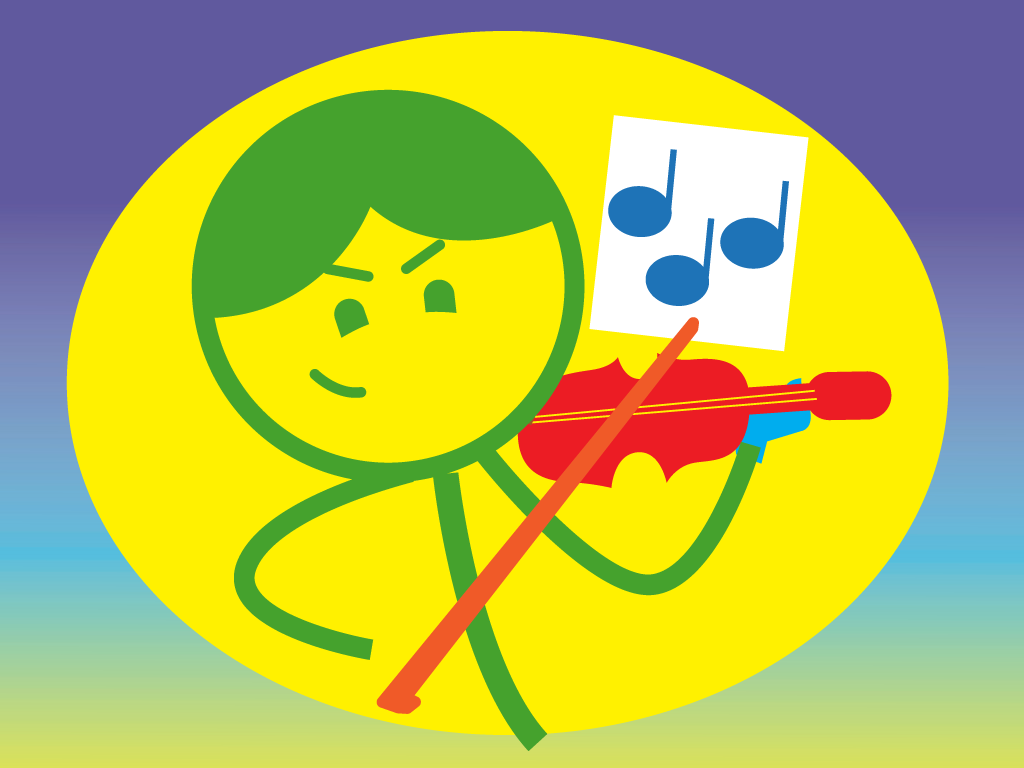How to Help Young Students Enjoy Practicing

After several years of teaching adults and children to play the violin, I’ve discovered a striking difference in the way that adults and children approach the idea of practicing.
When adults start taking music lessons, they usually have a goal in mind. They want to learn to play their favorite songs, or be able to play in church. These goals make them intrinsically motivated to practice. When life gets busy, many adult students lament over their decrease in practice time.
Young students rarely get so distraught when their practice time is cut short. What’s the difference? You might say that younger students just aren’t intrinsically motivated to practice. However, I find that most young students are intrinsically motivated. They are excited about learning a new instrument. They enjoy getting better just for the sake of getting better. But soon practicing becomes a chore that never ends. What’s the difference between most adults and young students? It’s not age, maturity, or self-discipline. It’s goals. Adults have an end in mind. They know what they want to accomplish while young students aren’t always aware of what they’re practicing for.
To teach students to practice more efficiently, help them understand why they need to practice. Ideal practicing is about self-discipline, persistence, and progress. But to help your student get to that level, you must first help them get motivated, develop goals, and form a guided practice routine.
Getting Motivated (and Staying Motivated)
Before your student can form goals for their playing, first they need to be aware of what goals are out there. Many young students have never heard musicians who play their instrument professionally. Therefore, they have no idea what they could sound like if they committed to practicing.
This is the key for students of any age to get motivated and stay motivated. Students must regularly listen to other people who play their instrument of choice. This bit of advice is often tagged on at the end of a lecture on practicing, or left off completely. Listening to appropriate music is the most important element of progress and the key to helping young students be intrinsically motivated to practice.
Notice I didn’t say they must listen to “professionals.” While listening to a professional musician is wonderful, sometimes listening to a more advanced student is the trick to getting a younger student motivated. Recitals, youth orchestras, or high school concerts are great ways to show young students a realistic goal they could achieve with a few years of practicing.
In today’s world there are so many ways to immerse yourself in music right at home. Finding what to watch out of thousands of videos is the tricky part. If you don’t know where to start, your teacher could probably send you a list of dozens of songs to get you started.
Live performances do wonders for motivation. When I experience a slump in practicing, nothing gets me motivated like watching a violinist perform live. Most orchestras have concerts geared towards young people. But there are many more ways to hear good music. Bluegrass festivals, chamber music concerts, recitals, and music summer camps to name a few.
The more you surround your student with music, the more goals they will discover, the more likely they will enjoy practicing.
Developing Goals
Once students hear advanced players, they are more aware of what they can achieve. Some goals might be performing in a recital, playing duets with a friend, auditioning for a youth orchestra, starting a band, performing for a nursing home, attending a music camp, entering music competitions, composing their own music, or even making their own music videos. The possibilities are endless!
For all students, whatever their age, playing with a group can be a great experience. You don’t have to be an accomplished player to be ready to play with others. Community orchestras and church groups often welcome amateurs and beginners. Research local youth orchestras in your area. They often have several groups for different ages. When you play with other people, you learn about their musical goals, which can inspire your goals.
Guided Practice
Now that your student is motivated with some goals in mind, they are much more likely to be self-disciplined when it comes to practicing. However, no one is born knowing exactly how to practice, so guiding their practice time is essential to success.
How much you are involved with your child’s practice routine will vary with age and their level of commitment. For students around ages 5-8, it is best if parents attend the lesson and help the students stay focused during their practice sessions. Regardless of age, here are some tips to help guide your student’s practicing.
- Develop a routine. Start with warm-ups and scales, progress to method books, then move on to new pieces, and end with songs your student has already learned. Practice in the same order every day. Soon it will feel wrong to start practicing without first doing scales!
|
Would you try a fun way to track your practice and progress? Check out our new practice log.
Lessonface has created a new option for students: a practice log to help you track your practice, which we will have ready-to-use this month. The log will come with real stickers -- for helping kids (of all ages) keep up with practicing in a fun way. Would you like to help us test? Sign up here and we'll mail you a two-month set of logs + stickers for free. You can download and print the practice log template at any time here. Limited, US-based students only at this time, with apologies to our outside-of-the-US-students, while supplies last, one set per student. |
- Keep a practice log. This can either be a time-oriented practice log, a goal-oriented log, or both. Timed logs simply record the amount of time practiced every day. Goal-oriented logs focus on achieving certain standards (playing a rhythm correctly, getting all your C-sharps in tune, etc.).
- Keep a copy of your teacher’s lesson notes on the stand.
- Avoid mindless repetition. Encourage thoughtful practicing. Students should focus on smaller measures or sections. Sometimes they need to repeat that section several times to get it right. But you want to avoid the “play this 10 times method.” Encourage students to make it better every time. There are numerous ways to do this. I use a game where I place five skittles on the music stand. I ask a student to play a measure five times. I usually give them a goal like: keep your bow straight, or make sure your F-sharps are in tune. Every time they play a measure correctly, they get a skittle. If they make a mistake and forget the goal I gave them, I eat a skittle. Just the threat of me eating their candy does the trick. It works every time.
- Use incentives. Using incentives and rewards can help encourage better practicing. However, if students aren’t listening to music and dreaming up goals, incentives may only go so far. Little things can encourage a feeling of accomplishment, like putting a sticker on a song after learning it. I’ve heard of wide array of incentives for practicing, from monetary rewards to being excused from dish duty. Find a reward system that not only encourages practicing, but promotes a love for music.
- Perform. Ask your child to play a song for you or perform for family and friends. Encouragement from others can do wonders for motivation.
- Always end on a high note. End with a fun song, or after the student plays a difficult concept correctly. If your student feels happy and accomplished when they set the violin down, they’re more likely to be excited about playing it again.
If your student is struggling with practicing, listen to music, get motivated, dream up some goals, and enjoy practicing!





